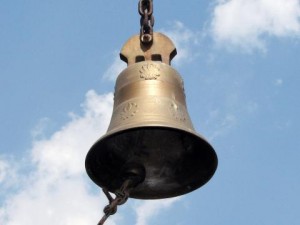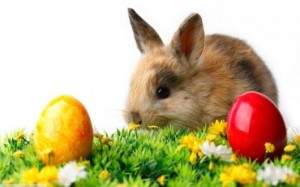THE SYMBOLS OF EASTER
Easter is one of the biggest and brightest holidays in the Christianity. The gradual accumulation of various traditions over the centuries, the original symbols of the holiday got different meanings for different people, depending on their faith.
From dying and exchanging eggs, to Easter Bunnies, carnivals and ritual bread, all traditions have deep roots in the past. Whether you are religious or you simply like the atmosphere of the spring holiday, learning more about the traditions is an interesting way to connect what we do today, with what people before our time.
History of Easter
The English medieval historian Bede (673-735) believed that Anglo-Saxon name of Easter comes from ancient pre-germane Teutonic mythology. Eostra (Eostre) is the Anglo-Saxon goddess of spring and the month of April is dedicated in her honor. Celebrations in her honor were organized during the spring equinox. The desire to make Christianity acceptable to people, the Anglo-Saxon Christians begin to use the name Easter as a Christian festival of the Resurrection of Christ overlaps with the ancient celebration of the coming spring. At the same time, Easter is linked to the Jewish Passover, which is celebrated in the first month Nisan in Jewish lunar year. The Passover celebrated God’s deliverance of the Jewish people from 300 year slavery in Egypt and hence the leadership of Moses. In the Christian tradition on Easter we celebrate the resurrection of Jesus Christ from the dead on the third day of his death. The celebration of the Resurrection dates from early Christian history. By the second century, Easter is already well established holiday, although there has been a long dispute about the date that should be celebrated. Eastern churches wanted Easter to be celebrated according to the lunar calendar and weekday because early Christians celebrated every year on 14th day of the Jewish month of Nissan, while Western churches insisted that Easter should be celebrated always on Sunday, regardless of the date. This is one of the main issues that the emperor Constantine convened the Nicene Council in 325, where it was decided to celebrate Easter on the first Sunday following the full moon after the vernal equinox. According to the Alexandrian theological school, well known by its astronomical calculations, March 21 is the date accepted of the vernal equinox. The date for the celebration of Easter begins by determination of the week in which there is a full moon, just after the vernal equinox. So Easter is determined as a holiday in the period between 21 March and 25 April. The difference in modern celebration is due to difference in dates, weather it is according to the Gregorian calendar in the western countries or the Julian in the eastern.

Church bells in most countries in Europe, stop tolling on Holy Thursday. They are suspended in memory of Christ’s suffering and begin to tolling again on Great Saturday, as a sign of joy – Christ’s Resurrection.
Dyed eggs are the most popular symbol of Easter all around the world. In all cultures the egg symbolizes the beginning of a new life. A Latin proverb says, “The whole world is created from a single egg.” The egg is symbol of the beginning of a new life and is located in the center of all the Easter rituals. For all Christians eggs are symbol of Christ’s resurrection. Dying of the eggs is one of the most beautiful and happiest Orthodox customs, which is performed on Great Thursday. It is believed that eggs that are boiled and dyed before sunrise, will not spoil the whole year until next Easter. The first egg dyed in red, according to the customs, is kept and considered as guardian of the home throughout the year.
The lamb symbolizes a man, because Jesus is presented as the good shepherd who keeps his sheep. Lamb comes into the world in spring. Israelis used lamb blood to rescue firstborn in Egypt.
The rabbit – This symbol originates before the development of Christianity. Rabbits are traditionally associated with fertility and wealth. There is a legend according to which the Easter hare was once great and beautiful bird and belonged to a goddess. Once she got angry and turned the wild bird into rabbit. Because it’s still a bird in the soul, it continues to make nests and fill them with eggs.





